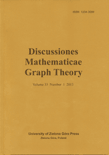
Discussiones Mathematicae Graph Theory
Scope & Guideline
Illuminating the Landscape of Graph Theory Research
Introduction
Aims and Scopes
- Graph Connectivity and Structure:
Research focusing on the connectivity properties of graphs, such as k-connectivity, matchings, and the structure of specific types of graphs like bipartite and planar graphs. - Domination and Coloring Problems:
Exploration of domination parameters, various coloring problems (including total, equitable, and chromatic numbers), and their implications for graph theory. - Ramsey Theory and Extremal Graphs:
Investigating Ramsey numbers, Turan problems, and extremal graph theory, with a focus on understanding how certain properties can be maintained across various graph configurations. - Graph Algorithms and Combinatorial Optimization:
Development and analysis of algorithms for solving graph-related problems, including optimization techniques and computational complexity. - Applications of Graph Theory:
Utilization of graph theory concepts in real-world applications, including network design, social networks, and biological systems.
Trending and Emerging
- Advanced Domination and Resource Allocation:
An increased emphasis on advanced domination concepts, such as fractional and total domination, reflects a growing interest in resource distribution models in networks. - Graph Games and Strategic Interactions:
Research on games involving graph structures, such as domination games and graph grabbing games, is trending, indicating an interest in the interplay between combinatorial game theory and graph theory. - Spectral Graph Theory:
A rising trend in the application of spectral methods to analyze graph properties and behaviors, indicating a deeper exploration of eigenvalues and their implications. - Interdisciplinary Applications:
Emerging studies that apply graph theoretical concepts to fields such as computer science, biology, and social sciences demonstrate a trend towards interdisciplinary research. - Dynamic and Evolving Graphs:
Research focusing on graphs that evolve over time, including topics such as dynamic connectivity and temporal networks, is gaining traction, reflecting real-world applications.
Declining or Waning
- Classical Graph Enumeration:
Research focused on classical enumeration problems, such as counting specific types of graphs or configurations, has become less frequent as new methods and areas of interest emerge. - Basic Properties of Specific Graph Classes:
Studies that merely describe or catalog properties of well-known graph classes without substantial theoretical advancements are becoming less common. - Elementary Graph Theory:
Basic results and simple proofs in graph theory are seeing a decline, as the field increasingly emphasizes deeper, more complex results and methodologies.
Similar Journals
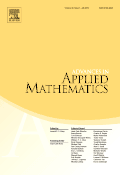
ADVANCES IN APPLIED MATHEMATICS
Bridging Theory and Practice in Applied MathematicsADVANCES IN APPLIED MATHEMATICS, published by ACADEMIC PRESS INC ELSEVIER SCIENCE, is a prestigious journal that has served the mathematical community since 1980. With its ISSN 0196-8858 and E-ISSN 1090-2074, the journal is based in the United States, specifically in San Diego, CA. As a leading periodical in the field, it holds a notable Q2 ranking in Applied Mathematics and has been consistently ranked in the 43rd percentile among similar journals, illustrating its relevance and impact within the discipline. Although not an Open Access journal, ADVANCES IN APPLIED MATHEMATICS plays a crucial role in disseminating significant research findings, theoretical studies, and innovative applications of mathematics that address real-world problems. Researchers, professionals, and students alike will find valuable insights in its carefully curated publications, making it an essential resource for those looking to advance their understanding and application of mathematics.

Applicable Analysis and Discrete Mathematics
Pioneering Discoveries in Applied Analysis and Discrete TheoryApplicable Analysis and Discrete Mathematics is a prestigious academic journal dedicated to the fields of analysis, applied mathematics, and discrete mathematics. Published by the esteemed University of Belgrade, Faculty of Electrical Engineering, this journal has established itself as a vital resource for researchers, professionals, and students alike, with a strong focus on advancing theoretical and practical knowledge in these disciplines. As of 2023, it holds a commendable ranking in the Q2 quartile across multiple categories including Analysis, Applied Mathematics, and Discrete Mathematics and Combinatorics, reflecting its significant impact and relevance in the academic community, with Scopus rankings placing it in the top 25% for Discrete Mathematics and Combinatorics. Although currently not an open-access journal, it strives to provide a platform for high-quality original research articles and discussions that bridge theoretical insights and real-world applications. Since its inception in 2007 and set to continue through 2024, the journal remains committed to fostering innovation and collaboration within the mathematical sciences.

COMPTES RENDUS MATHEMATIQUE
Advancing mathematical frontiers, one paper at a time.COMPTES RENDUS MATHEMATIQUE is an esteemed open-access journal published by ACAD SCIENCES, dedicated to advancing the field of mathematics. Founded in France, this journal has established itself as a vital platform for scholarly communication within the mathematical community, receiving a commendable Q2 ranking in Mathematics (Miscellaneous) for 2023, reflective of its commitment to high-quality research dissemination. The journal’s impact is further underscored by its position within the Scopus rankings, where it is recognized among the top 205 out of 399 journals in the broader category of General Mathematics. With an open-access model launched in 2020, COMPTES RENDUS MATHEMATIQUE ensures that research is widely accessible, promoting collaboration and innovation within academia. Covering a wide range of mathematical disciplines, it welcomes contributions that push the boundaries of knowledge in the field. The journal's convergence of issues from 2002 to 2024 positions it as a reliable source of foundational and cutting-edge mathematics research, appealing to researchers, professionals, and students alike. Its address is located in the heart of Paris at 23 Quai de Conti, 75006, France, reinforcing its legacy in a city renowned for its scholarly contributions.

JOURNAL OF COMBINATORIAL OPTIMIZATION
Unlocking the potential of applied mathematics and computational theory.JOURNAL OF COMBINATORIAL OPTIMIZATION, published by Springer, stands at the forefront of research in the fields of applied mathematics, computational theory, and combinatorial optimization. With an ISSN of 1382-6905 and E-ISSN of 1573-2886, this esteemed journal serves as a vital platform for groundbreaking studies and methodologies from 1997 to 2024. Notably positioned in the Q3 quartile across several categories, including applied mathematics and discrete mathematics, it reflects a commitment to high-quality research that pushes the boundaries of knowledge in quantitative analysis and algorithm development. Although it does not offer open access, its visibility and impact are underscored by impressive Scopus rankings, such as the 67th percentile in discrete mathematics and combinatorics. The journal aims to foster a comprehensive understanding of combinatorial optimization and its applications, making it an indispensable resource for researchers, professionals, and students eager to stay abreast of the latest trends and advancements in these dynamic disciplines.

Advances and Applications in Discrete Mathematics
Exploring the Frontiers of Discrete MathematicsAdvances and Applications in Discrete Mathematics, published by PUSHPA PUBLISHING HOUSE, is a premier journal dedicated to the flourishing field of discrete mathematics. With a focus on both the theoretical aspects and practical applications, this journal serves as a valuable resource for researchers, professionals, and students aiming to explore cutting-edge developments in areas such as combinatorics, graph theory, and algorithms. Although specific impact factors have yet to be established, its commitment to quality scholarship is reflected in its rigorous peer-review process, ensuring that published articles meet high academic standards. The journal encourages open access to disseminate knowledge effectively, fostering collaboration and innovation within the discrete mathematics community. As a vital platform for researchers wishing to contribute to this dynamic field, Advances and Applications in Discrete Mathematics plays a critical role in promoting advancements and applications that are essential to both theoretical exploration and practical problem-solving.

Journal of Combinatorics
Navigating the Landscape of Combinatorial InnovationsJournal of Combinatorics is a premier academic journal dedicated to advancing the field of combinatorial theory and its applications. Published by INT PRESS BOSTON, INC, it aims to provide a robust platform for researchers, professionals, and students to disseminate their findings and engage with cutting-edge developments in combinatorics. With a focus on high-quality, peer-reviewed articles, the journal fosters rigorous mathematical discussions surrounding various facets of combinatorial structures, graph theory, design theory, and combinatorial optimization. Although currently not available as an Open Access journal, the Journal of Combinatorics plays a vital role in enriching the mathematical sciences and serves as an essential resource for academics seeking to stay updated with the latest trends in combinatorial research. By maintaining a commitment to excellence and innovation, this journal is indispensable for anyone looking to deepen their understanding in this critical area of study.
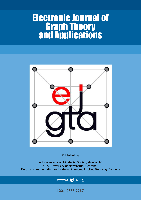
Electronic Journal of Graph Theory and Applications
Innovating pathways in mathematics through graph theory.The Electronic Journal of Graph Theory and Applications, published by Institut Teknologi Bandung, is a prominent open-access journal since 2013, dedicated to the dynamic field of graph theory and its various applications. With an ISSN of 2338-2287 and an impressive categorization in 2023, the journal stands at Q2 in both Applied Mathematics and Discrete Mathematics and Combinatorics, reflecting its growing influence and recognition within the academic community. With its geographical base in Bandung, Indonesia, the journal seeks to provide researchers, professionals, and students with a platform to disseminate innovative research and applications, bridging gaps in both theoretical and practical domains. The Scopus rankings further establish its commitment to excellence, notable as Rank #54/92 in Discrete Mathematics and Combinatorics and Rank #473/635 in Applied Mathematics. By facilitating open access to high-quality research, the Electronic Journal of Graph Theory and Applications significantly contributes to advancing scholarship and encourages diverse perspectives within the field.
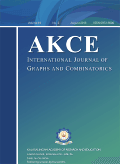
AKCE International Journal of Graphs and Combinatorics
Pioneering Research for a Dynamic Mathematical Landscape.AKCE International Journal of Graphs and Combinatorics, published by TAYLOR & FRANCIS LTD, serves as a significant platform in the field of Discrete Mathematics and Combinatorics. With its commitment to open access since 2015, the journal ensures that cutting-edge research is readily available to a global audience, promoting the dissemination of knowledge and high-quality scholarship. Recognized for its impact in the discipline, the journal is currently ranked Q3 in its category for 2023 and holds a commendable Scopus ranking, falling within the 69th percentile. Researchers, professionals, and students alike will find invaluable insights and contributions in this journal, which spans a wide range of topics related to graph theory and combinatorial structures. Operating from its base in India, and converging from 2011 to 2024, the AKCE International Journal invites submissions that push the boundaries of mathematical exploration and foster innovative methodologies in a rapidly evolving field.
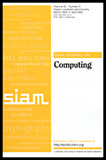
SIAM JOURNAL ON COMPUTING
Catalyzing Innovative Solutions to Computational Challenges.Welcome to the SIAM Journal on Computing, a premier publication of SIAM Publications dedicated to advancing the field of computational science. Established in 1984, this journal provides a platform for groundbreaking research and theoretical advancements that shape the landscape of both Computer Science and Mathematics. With an impressive impact factor and consistently ranking in Q1 quartiles for its categories, the journal remains an essential resource for scholars looking to contribute to innovative computational theories and methodologies. Although not currently an open-access journal, the SIAM Journal on Computing offers rigorous peer-reviewed articles, ensuring high-quality contributions that appeal to researchers, professionals, and students alike. As we converge towards 2024, this journal continues to play a vital role in influencing future research directions and fostering an academic community devoted to the exploration of computational challenges. Join us in exploring the forefront of computing research!

COMBINATORICA
Fostering Innovation in Discrete Mathematics ResearchCOMBINATORICA, published by Springer Heidelberg, is a leading international journal dedicated to advancing the fields of Discrete Mathematics and Combinatorics. With an illustrious history dating back to 1981 and a remarkable commitment to excellence, this journal has earned its place in the highest echelons of academic publishing, currently ranked in the Q1 category for both Computational Mathematics and Discrete Mathematics and Combinatorics. Located in Germany and recognized for its high-quality research contributions, COMBINATORICA fosters innovative discussions and disseminates significant findings that shape contemporary mathematical theory. Although it does not offer Open Access options, its rigorous peer-review process ensures that each publication meets the highest scholarly standards, making it an essential resource for researchers, professionals, and students engaged in mathematical sciences. With an impactful H-Index reflecting its citation influence, COMBINATORICA continues to be a pivotal platform for groundbreaking research in combinatorics and its applications.